
|
Astronomy Picture Of the Day (APOD)
4.08.1997
On Mars, sunsets can appear salmon pink. The unusual color is partly due to rust: oxidized iron from Martian dust circulating in the Martian atmosphere. Clouds appear in the morning and evening, but usually evaporate in the midday Sun.
 The Cygnus Loop
The Cygnus Loop
3.08.1997
15,000 years ago a star in the constellation of Cygnus exploded -- the shockwave from this supernova explosion is still expanding into interstellar space! The collision of this fast moving wall of gas with...
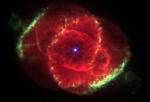 The Cat's Eye Nebula
The Cat's Eye Nebula
2.08.1997
Three thousand light years away, a dying star throws off shells of glowing gas. This image from the Hubble Space Telescope reveals "The Cat's Eye Nebula" to be one of the most complex planetary nebulae known.
 A Martian Sunset
A Martian Sunset
1.08.1997
You've had a hard day rolling past Martian rocks, so now just relax your APXS and enjoy the Martian sunset. The above pictures taken by Mars Pathfinder highlight how clouds vary during the end of a Martian day.
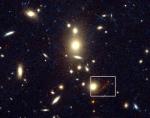 Behind CL1358+62: A New Farthest Object
Behind CL1358+62: A New Farthest Object
31.07.1997
What if we could see back to the beginning of the universe? At one tenth the universe's present age, we might see galaxies forming. But what did galaxies look like when they were forming?
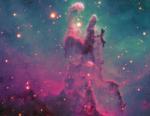 Eagle Castle
Eagle Castle
30.07.1997
What lights up this castle of star formation? The familiar Eagle Nebula glows much like a neon sign, but in many colors at once. The above photograph is a composite of three of these glowing gas colors.
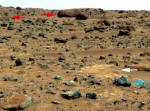 Strange Rocks on Mars
Strange Rocks on Mars
29.07.1997
The rocks on Mars tell us stories about their past. To decipher these stories, a scientist must become a detective, searching for clues and fitting them with theories. The above photograph of the rocky Martian surface to the northeast of Pathfinder's landing site provides many such clues.
 Help Aldebaran Map the Moon
Help Aldebaran Map the Moon
28.07.1997
Turn on your camcorder, go outside, and become an astronomer. How?. Tomorrow morning, our Moon will pass directly in front of Aldebaran, the brightest star in this picture and in entire constellation of Taurus.
27.07.1997
Pictured above is one of the world's premiere radio astronomical observatories: The Very Large Array (VLA). Each antenna dish is as big as a house (25 meters across) and mounted on railroad tracks. The VLA consists of 27 dishes - together capable of spanning the size of a city (35 kilometers).
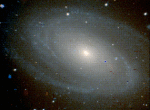 M81 in True Color
M81 in True Color
26.07.1997
Here's is a spiral galaxy in true colors. Previously, M81 was shown in two colors only, but M81's real colors are just as dramatic. In the above picture, note how blue the spiral arms are - this indicates the presence of hot young stars and on-going star formation.
|
January February March April May June July August September October November December |
|||||||||||||||||||||||||||||||||||||||||||||||||